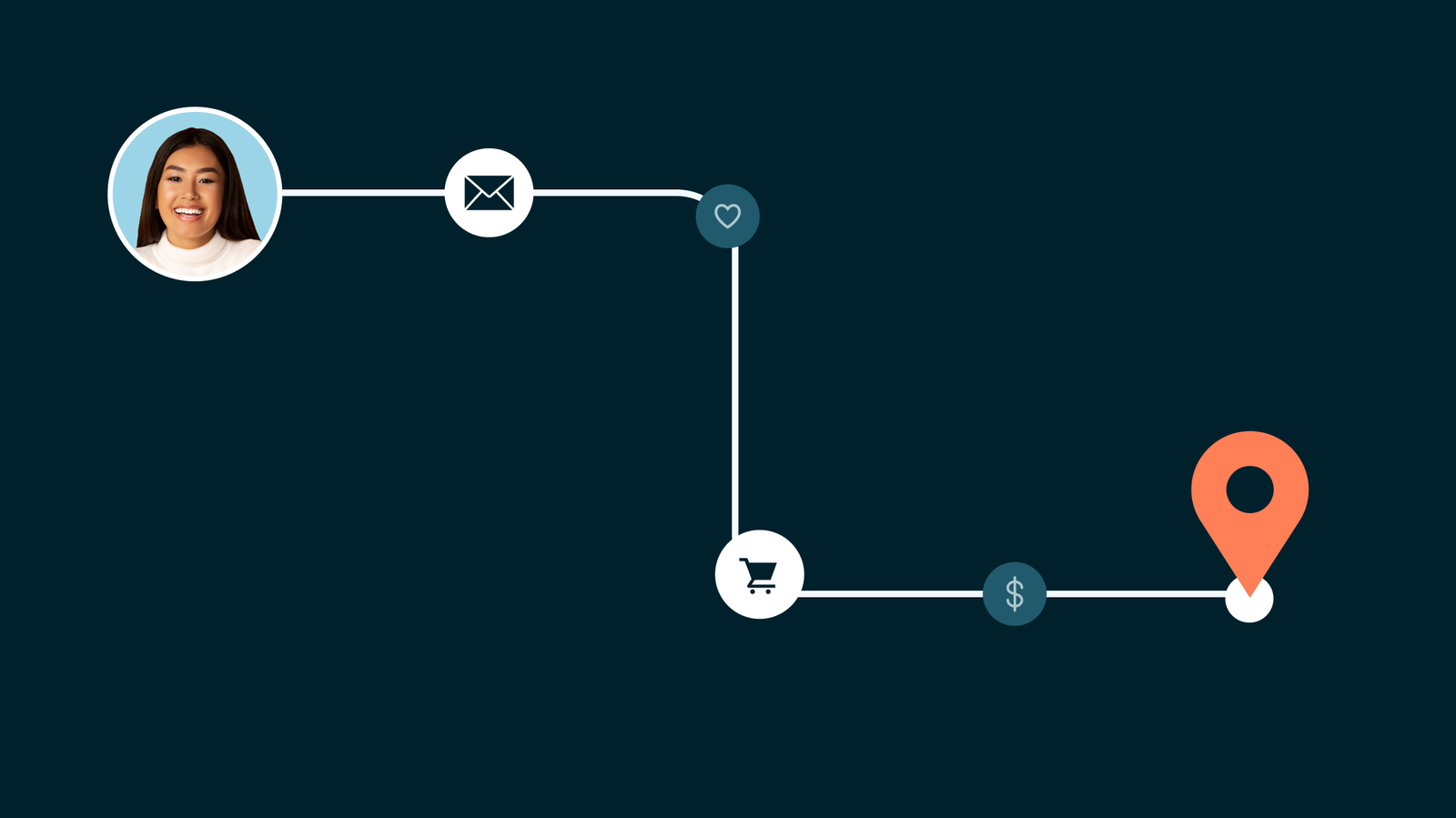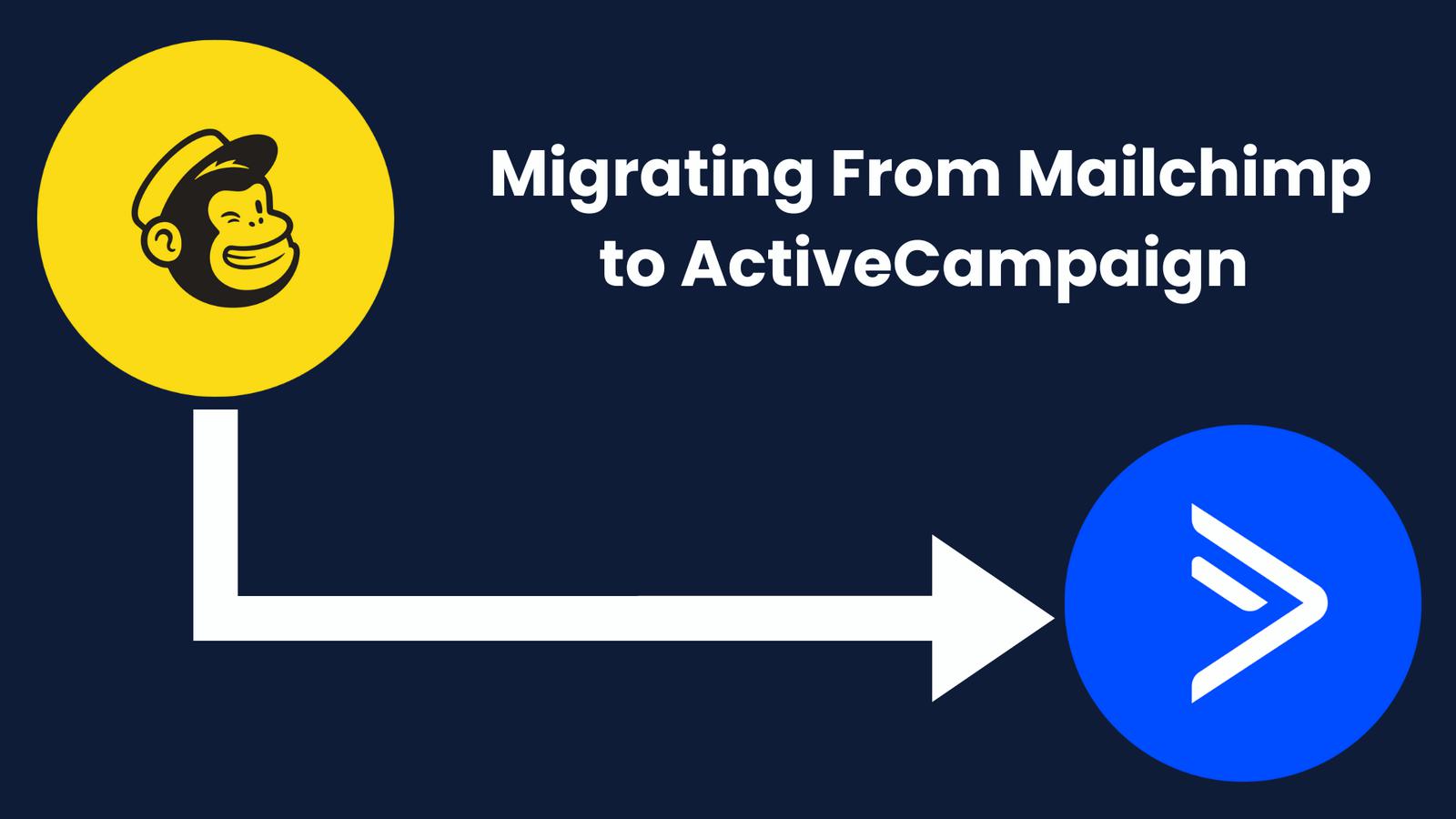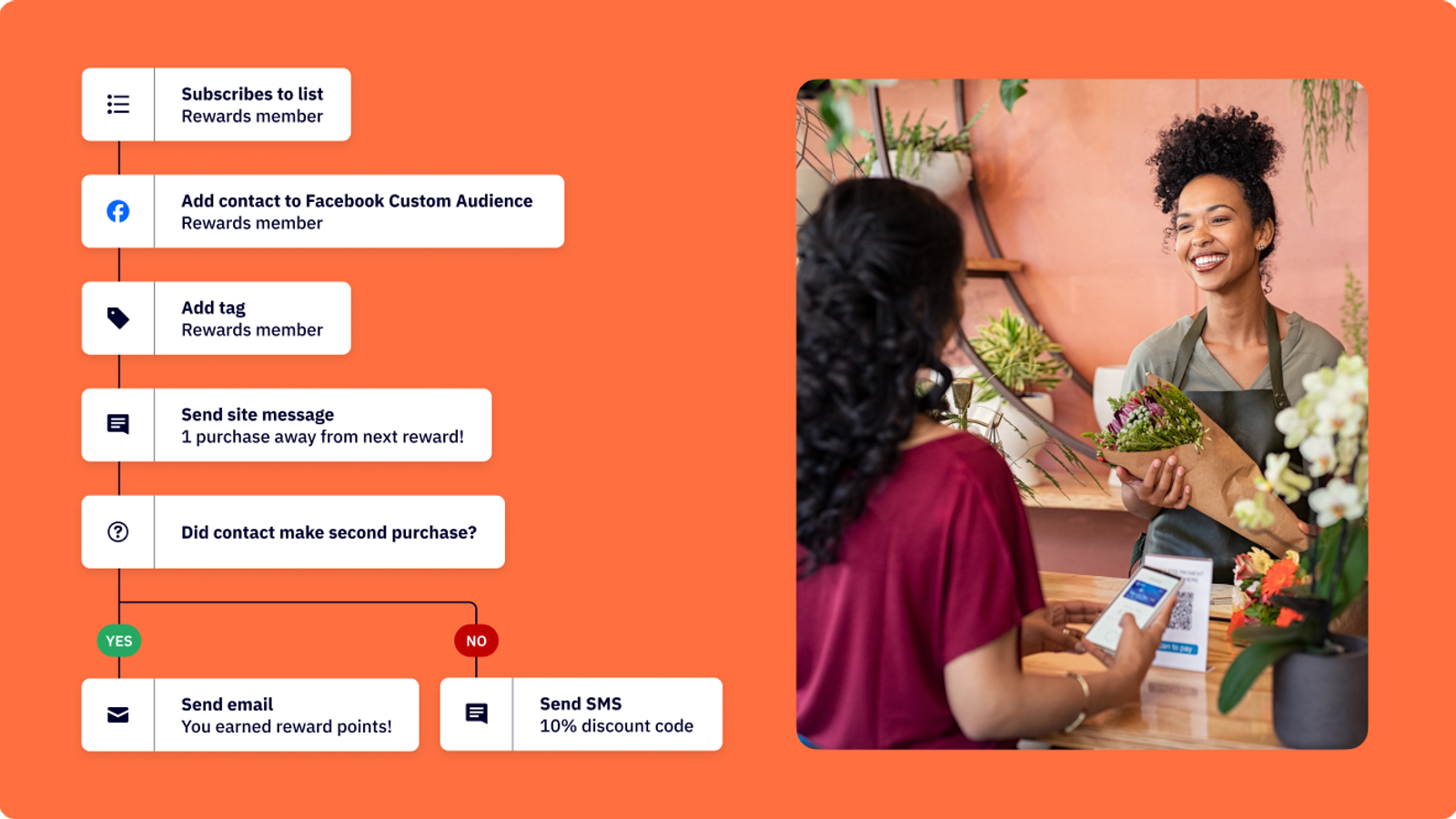From visiting your site or reading an email to making a purchase, your customer goes through a long journey before they’re ready to buy. Don’t you wish you could interact with them consistently every step of the way?

Thankfully, it’s possible with customer experience management (CXM).
With the right CXM tools and strategies, you can maintain a streamlined customer experience to keep leads interested and boost the chances of conversion. However, CXM isn’t exactly straightforward, especially since most customer experiences are typically fragmented across multiple channels.
In this article, we’ll review the key concepts of CXM, its benefits, common strategies, and how to choose the best tools to get you started.
Table of contents
What is customer experience management?
Customer experience management (commonly abbreviated as “CXM” or “CEM”) is a collection of strategies, methods, and tools used to improve customer experience.

That may sound vague, but there’s a good reason—CXM is a very broad subject. In the following sections, we’ll introduce you to the basics of customer experience, how to manage it, why it’s important, and how it’s different from customer relationship management.
What is customer experience?
Customer experience refers to a customer’s overall experience when interacting with your company. That includes engaging with marketing communications, navigating your website, making a purchase, and so on.
There’s definitely a lot to unpack here. However, you can break down most aspects of customer experience into 3 major categories.
- Engagement: How much are your customers engaged with your company? Engagement can take many forms, such as opening marketing emails, interacting on social media, and making a purchase. Even one-time customers engage with companies in different ways. As we’ll see, an important goal of CXM is to encourage and track customer engagement in the right ways.
- Satisfaction: Are your customers satisfied with their experience? Even if a customer is engaged or makes a purchase, they may not always be satisfied—and if they aren’t satisfied, they aren’t likely to return. While maintaining and measuring customer satisfaction isn’t always straightforward (something we’ll cover later), it’s the primary goal of CXM.
- Experience: What’s the overall experience like? Both customer engagement and customer satisfaction stem from the experience itself. That may sound obvious, but it’s easy to lose sight of the big picture when you’re hyper-focused on sending the perfect email or optimizing your online store.
Though customer experience is often defined as the combination of engagement, satisfaction, and experience, this combination can vary widely between companies, industries, and customers. As a result, every customer experience is unique, and each experience may require a different approach and management method.
Two examples of customer experience
Let’s compare 2 companies: “Happy Pup Dog Treats” and “Industrial Plastics Inc.” As you might imagine, these are 2 very different companies with very different customers.
Though some of their customers might buy dog treats and industrial plastics, their customer experience will differ for each company. Let’s run through 2 likely customer experiences.
- Happy Pup Dog Treats sells—wait for it—dog treats. A customer’s experience might stem from an emotional attachment to their dog(s), which might cause them to search for dog treat makers. During their research, a customer might discover Happy Pup Dog Treats through a Google search, social media, or even word of mouth. Depending on how well the company engages with the customer during this phase, the customer might explore their website or even make a purchase. If their dog likes the treats, they might become returning customers.
- Industrial Plastics Inc. sells industrial-grade plastics, such as injection molded parts and colored filaments for 3D printers. If the company makes food-grade plastics, 1 consumer might be a food manufacturer looking to order plastic lids for a product. This customer experience might start by attending a trade show or searching for an industrial supply catalog. If they’re interested in Industrial Plastics Inc.’s offerings, they’ll contact a sales representative via phone or email. From there, the sales representative might highlight the benefits of using their product and start building a long-term business relationship.
Though both companies have different customer experience requirements, each has a vested interest in managing these experiences.
From our examples, Happy Pup Dog Treats might want to show ads to people who search for dog treats or offer special promotions for repeat customers. Similarly, Industrial Plastics Inc. might attend trade shows or offer bulk supply discounts to customers, such as a 10% discount when the food manufacturer purchases over 1,000 plastic lids.
CXM: Managing customer experience
There’s clearly a need for managing customer experience. But how do we manage it?
Enter CXM. Through various strategies and software tools, companies can now track leads and customers at every stage of their customer journey. In doing so, they can provide tailored experiences for every customer, which leads to improved customer satisfaction and, as a result, increased sales.
Though increased sales and customer satisfaction are great, they’re not the only benefits of adopting CXM—nor are they the only reasons CXM is so important.
Why is CXM important for business?
Investing in your customer experience is important for many reasons.
Beyond simply driving sales and building a strong reputation, CXM can also help you fine-tune your business based on the needs and values it helps you identify. Every other part of your business will thrive with happy customers and employees.
- Allows a deeper understanding of your customers. By tracking every point of a customer’s journey, you’ll gain a deeper understanding of their behaviors and needs, as well as potential segments based on age, demographics, and so on.
- Loyal customers are easier to retain. By using CXM to deliver fine-tuned, personalized experiences to every customer, you’ll boost customer retention rates and your ROI.
- Provides valuable customer feedback. It’s hard to know exactly what your customers like and don’t like—even if you give them a survey. By tracking their overall experience with CXM, you gain “covert” customer feedback by directly observing their actions.
- Empowers you to improve products and services. With a deeper understanding of customer needs and behaviors, you can also fine-tune your products and services based on what’s already successful.
- Helps measure the success of initiatives. Since CXM lets you closely monitor customer activity, you’ll be able to observe the effectiveness of marketing campaigns and other initiatives directly.
- Happy customers are more likely to recommend your business. A happy customer experience leads to happy customers. In turn, these happy customers are more likely to recommend you via word of mouth—one of the most powerful ways to increase customers.
- Maintains a competitive advantage. By adopting a simple CXM strategy, you’re already putting yourself ahead of the competition. Over time, you’ll gain a further advantage as you increase customer satisfaction and decrease customer churn.
CXM vs. CRM: Customer experience vs. customer relationships
There’s a good chance you’ve also heard of customer relationship management or CRM. You may have even heard it used interchangeably with CXM.
But what’s the difference?
While both CXM and CRM work to improve customer relationships, they do so in slightly different ways. Where CRM is mainly concerned with the data behind customer interactions (click-through rates, etc.), CXM uses this data to develop a more holistic, qualitative strategy spread across multiple channels.
Here’s what this difference often looks like.
- CRM focuses on the customer’s value to the company, while CXM focuses on the company’s value to the customer.
- CRM focuses on quantitative insights, while CXM focuses on qualitative customer insights.
- CRM is more concerned with improving internal processes, while CXM focuses on external processes like customer engagement.
- CXM uses CRM data to anticipate customer needs and deliver solutions in real-time.
What makes a great customer experience?
Before building and managing a customer experience, you first need to know what makes 1 truly great.

While “great” is subjective, most great customer experiences share common characteristics. Some are common sense, but they’re glossed over more often than many might think.
Does your current customer experience share these characteristics?
Meets customer needs
Above all, customer experience should meet customer needs. Whether that’s making certain pages easy to access or letting customers know when their favorite items are on sale, addressing relevant customer needs should always be your top priority.
But how can you know your customers’ needs? Though CRM and CXM tools can provide valuable perspective, it often comes down to trial and error—if not some intuition. You’ll often identify unique solutions depending on what’s typical in your industry.
Ultimately, meeting customer needs requires delivering relevant customer experiences. As we’ll see later, doing so requires understanding your customer and the points along their customer journey.
One example of this could be how they navigate from a marketing email to your storefront. Is your experience making the journey as easy as possible? How many steps are you putting between them and their goal?
Consistent and available
Consistency is key, especially when it comes to customer experience. Since many customers will revisit your website or marketing materials multiple times before making a purchase, keeping the experience consistent and available over time is essential.
Consistency and availability are especially important for retaining customers. If a customer is happy enough to make a purchase, drawing them back in for a second purchase takes little effort. However, if they return to a completely different (or unavailable) customer experience, they might not purchase at all.
Establishes trust and authenticity
Customers value trust and authenticity more than ever. As a result, these qualities should be ingrained in your customer experience.
It’s very easy to lose a customer’s trust, which is almost always permanent. Easy ways to lose trust include sneaking in hidden fees, sending less-than-transparent marketing communications, having a bad landing page, or delivering less than promised. If anything, companies should try to exceed customer expectations and be completely honest, even if it hurts a little.
Values customer satisfaction over profit
By extension of trust and authenticity, it’s also important to prioritize a good experience over profit. For example, many business customers aren’t satisfied with being bombarded with pop-ups and heavy-handed page navigation when visiting a website.
Though abandoning some of the sleazier “tricks” for increasing conversions might result in a slight short-term decrease in revenue, its long-term benefits to customer satisfaction will ultimately make you more successful.
Remember the human
Almost all of these points boil down to a single point: remembering the human.
Despite what your CRM tools might say, your customers are more than just numbers. They’re people with wants, needs, preferences, and goals. With a solid CXM strategy, you can identify these points and start delivering personalized—or dare we say, humanized—customer experiences.
Basic customer experience management strategy
Now that you know what makes a great customer experience, it’s time to make it a reality with CXM.

Though every management strategy is different, following these steps will help you get started on the right path. While your approach to each step will vary depending on your customers, striving to deliver personalized, authentic experiences will always deliver great results.
1. Get to know your customers
Understanding your customers’ needs and behaviors is the first step of any successful CXM strategy. By identifying what’s important to them, you’ll be able to deliver the right experiences.
CX and CRM data are especially useful for this step. With the right data, you can build customer profiles and perform customer segmentation based on age, interests, spending habits, etc.
2. Create a customer journey map
Now that you understand your customer, the next step is to map out their customer experience.
Also known as a customer journey or lifecycle, this map aims to identify key customer touchpoints and anticipate customer actions based on their (assumed) needs. Note that a customer journey map isn’t set in stone—nor is it always the same for every customer. In any case, you’ll be able to refine the entire customer journey as you receive customer feedback over time.
Most customer journeys consist of the following steps:
- Research: A potential customer discovers the company through advertising, search engines, etc.
- Comparison: The potential customer compares the company to others offering similar products or services. Comparison points might include cost, user reviews, and company reputation.
- Purchase: The potential customer becomes an actual customer. Note that purchase is only the beginning of a long-term customer experience.
- Support: The customer might call upon support resources to help troubleshoot what they’ve purchased. Bad customer service resources can quickly lose even the most loyal customers.
3. Identify emotional connections
Emotional connections are the key to strong, resounding customer experiences. By identifying emotions that resonate with your customers, you can start tailoring your brand to appeal to them.
For example, Happy Pup Dog Treats from our earlier example might appeal to their customers’ love for their dogs. Since these emotions likely include wanting to give their dogs the best-quality treats, Happy Pup’s customer experience might include conveying the quality of their ingredients and mutual love of dogs.
4. Get customer feedback and adjust
One of the most significant benefits of CXM is receiving and adapting to customer feedback. In doing so, you’ll gradually fine-tune your customer experience to deliver even better results.
Feedback isn’t always direct, however. Be sure to leverage feedback from CX and CRM data to identify what’s working and what isn’t.
Choosing a customer experience management platform
Though you may be able to implement CXM using your existing tools, it’s far easier using specialized CXM software. With so many different tools available, however, it isn’t always easy to choose—and what’s good for some companies may not be good for yours.
Ask these questions when choosing your next customer experience management platform.
Does it integrate with your current tools and workflows?
If you’re considering CXM tools, you probably already have tools for CX, CRM, or other marketing efforts. While most CXM tools won’t integrate with everything, the tool you choose should at least integrate with your heavy hitters to make implementation easier.
Can you create cross-channel customer journeys?
Customer journeys span across multiple channels and platforms—and your CXM tools should be able to follow along. As an extension of integration, make sure the tool you choose can help you plan and change every part of your customer journey, from email marketing to support resources.
Does it apply real-time data to customer profiles?
Effective CXM relies on applying real-time data to customer profiles and segments. Your CXM software should unify operational, financial, transactional, and behavioral data into a single customer profile in real-time—the more unified and connected your customer profiles, the better the customer experience.
Does it support personalization?
Since CXM is an ongoing process, the right tool should allow you to create, test, and edit personalization features at every stage of your customer journey. These personalizations should be available in real-time to deliver instant results.
Can it help you scale and grow your business?
Finally, your CXM software should scale with you and provide you with actionable insights that help you do so. Many platforms now use predictive analytics and machine learning to help identify growth opportunities.
All Of your CXM In One Place
FAQ
What is the main goal of customer experience management?
The main goal of CXM is to build customer loyalty and customer retention. To do so, CXM uses a broad range of tools and methods to provide personalized, positive experiences for every customer.
How is customer experience management different from CRM?
Where CRM focuses exclusively on customer data and resolving issues, CXM is a holistic approach that uses this data to create a strategy for attracting and retaining customers. While they may be different, they rely on each other to build strong relationships and interactions with customers.
Is customer experience management part of marketing?
Yes. CXM utilizes several different marketing strategies and tools to deliver experiences for customers that help boost sales by retaining customers long-term.
Why is CXM important for business?
CXM is an essential strategy for building customer loyalty and customer retention. Without focusing on your customer experience, customers are unlikely to return or make repeat purchases—assuming they even purchase in the first place.
Conclusion
Customer experience management is 1 of the most effective ways to build strong, long-lasting relationships with your customers. However, it’s also 1 of the most challenging things to get right.
With ActiveCampaign’s customer experience automation tools, you can quickly gather customer data in real-time, build intuitive customer profiles, and start building your own proven customer experiences. With tools for email marketing, CRM, and marketing automation, it’s a great single-step solution for both small and large businesses.For more information and to request a free demo, contact a CXM expert from ActiveCampaign today.







